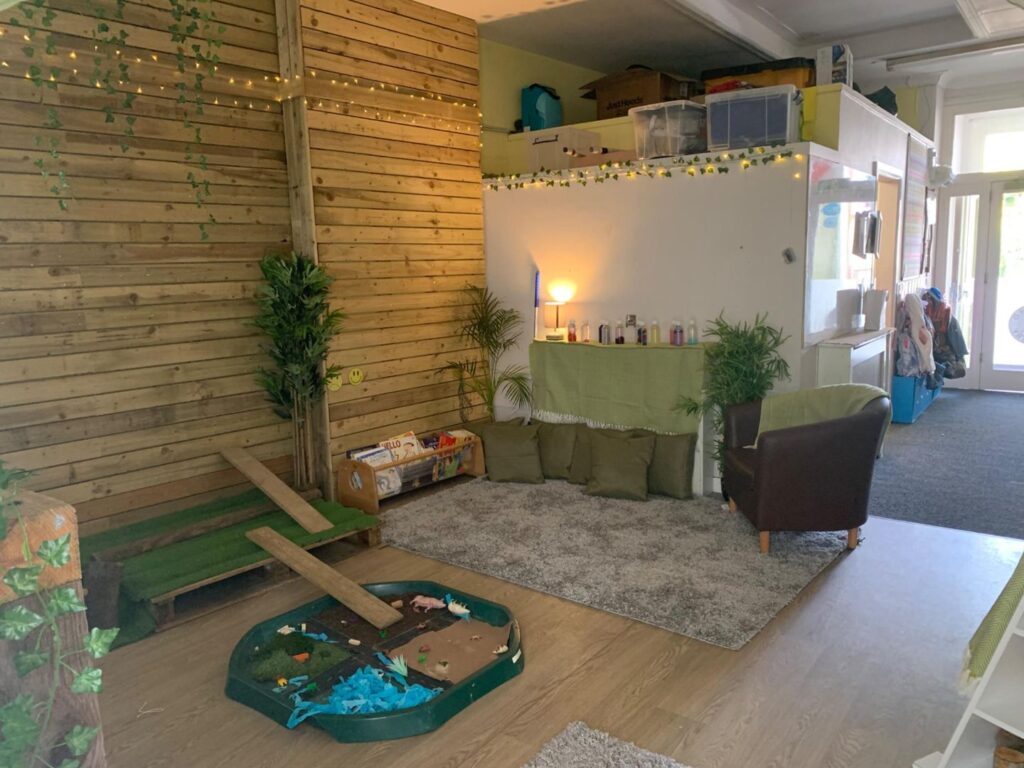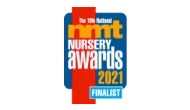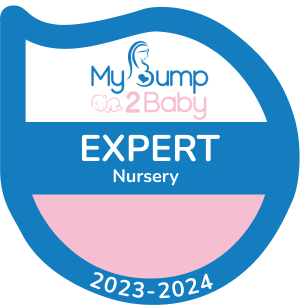BLOG FEATURE: HYGGE IN THE EARLY YEARS
Our senior manager Danielle Grant shares her love of Hygge and how we can all achieve a little bit of Hygge in the home.
Danielle, tell us a little more about Hygge…
HYGGE is a Danish ‘way of life’. The word HYGGE translates loosely into the word ‘cosy’ and is used to describe the feeling of contentment or cosiness you have when you experience joy in your life.
This could be something as simple as coming in after a wet, rainy day at work, putting your pyjamas and fluffy socks on and sitting in front of the fire with a hot chocolate. This feeling of cosiness and peace, is what we mean by HYGGE.

What do you love most about Hygge…
I love that HYGGE encourages us to be present, enjoying and appreciating the ‘here and now’. The HYGGE approach can be used in your daily life but we also use this in our practise across our nursery settings where we encourage our children to be mindful and to appreciate their world.
A big part of the HYGGE approach is mental health awareness. When you adopt the HYGGE lifestyle, you immediately shift your mindset into a more calm and relaxed place of being. You learn what makes you happy and how to help yourself if you are feeling low. This could be something as simple as popping on your favourite song or snuggling up with a blanket.
I personally love the use of low lighting in our nurseries, moving away from the artificial strip lights and considering the use of natural light, use of fairy lights and lamps. This makes such an impact on our children’s behaviour, making them more calm and engaged in their play.
How is Hygge beneficial to Early Years settings?
The HYGGE approach is beneficial to early years settings as it encourages adults and children to be mindful and to be present in their day. Staff who engage in this way of thinking can see a huge difference in their own mental well-being. This approach impacts the full experience that we offer the children such as;
-The use of low lighting (lamps, natural light, fairy lights) to encourage a calming and cosy environment which replicates the home environment. This supports children to feel relaxed in their play and encourages a positive learning environment. When children are calmer, they are better behaved and more engaged in their play.
-Home-from-home. We use lamps and low lighting in our homes, we all know the benefits of our children having a homely learning environment, especially for our younger children and babies it is essential that they have a connection to their home and family.
-Togetherness is one of the principles of the HYGGE approach and we encourage the appreciation of this in our Nurseries. Sharing our learning, stories and voices and recognising everyone’s thoughts and ideas. This can boost children’s self-esteem and confidence.
-Mealtimes – self-serving, using real ceramics and cutlery to encourage independence and life skills. Setting the tables with a lovely table cloth and vase of flowers, this invites nature into our experience and encourages the homely atmosphere.
-Including soft furnishings in the environment so children can snuggle up if they feel like they want some time away from the ‘busyness’ of the room. This supports their wellbeing.
-Provocations- adding light to our provocations to enhance the children’s experiences. Using natural materials so that children can feel and explore nature. Using real items rather than plastic items so that children can learn about their world first-hand.
HYGGE is all about life and is not all about what things look like. HYGGE is a feeling, it is unique to everyone.
What are our settings doing to introduce Hygge?…
So many things, just a few of which include:
-Swapping out main strip lighting for low lighting, lamps, fairy lights and considering the use of the natural light from the windows.
-Ensuring nature and natural materials are brought inside so that children have a connection with the natural world, this include plants and flowers.
-Using real items in the home corners rather than ‘pretend’ items.
-Using real crockery and glasses at meal times and introducing self-service for our children at all snack and meal times.
-Making the environments cosy and warm by introducing more soft furnishings, plants and drapes.
-Considering Maslow’s Hierarchy of Needs and the need for ‘aesthetic’ enjoyment. Ensuring the environment is clean, clutter free and homely.
-Ensuring children have a connection with their home and family, by creating a family area with photographs from home of their family and pets (special people in their life).
-Considering sleep time, ensuring children are comforted, have cosy spaces to sleep.
Thanks to Hygge, our children are more engaged in their play experiences, more mindful to others and other children and adult’s feelings. They are calmer and more relaxed, and they take pleasure in looking at their family photos and talking about/showing them to their friends and teachers.
Danielle Grant, Senior Manager (People and Practice) Scotland.
Do you have any tips for parents wanting to try Hygge at home?…
Consider what makes them feel ‘HYGGE’, even if it is just something small and try it. To recognise the feeling it brings you will make a huge difference in your wellbeing. Try to be present, appreciate and recognise all of the little things in life that bring you joy. Once you shift your mindset, you will be able to think in a much more positive way and be able to encourage others to do the same!













